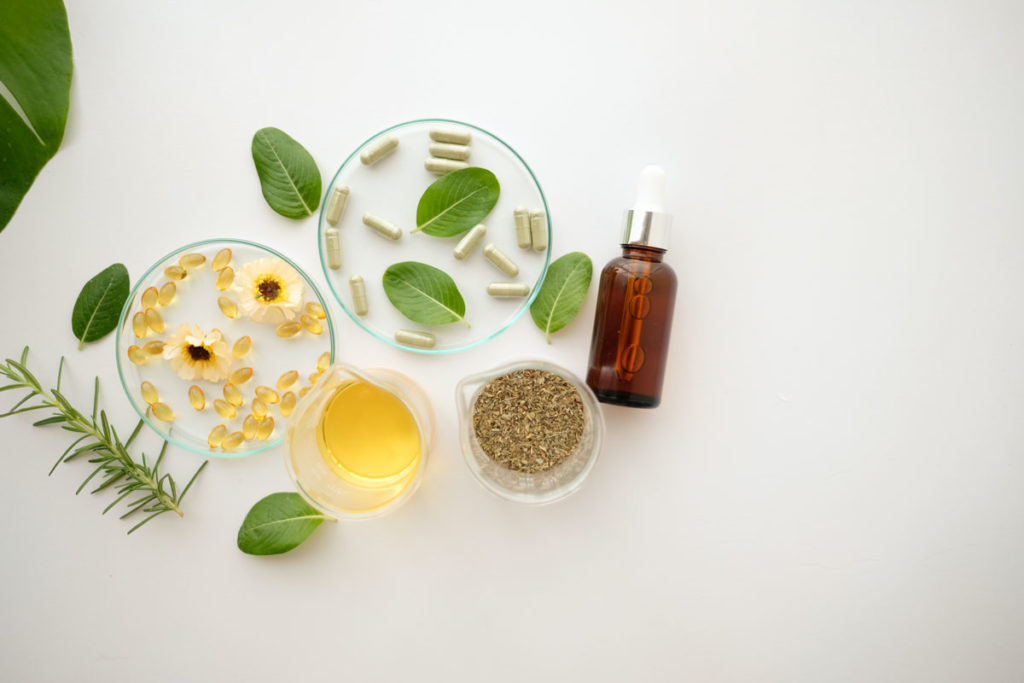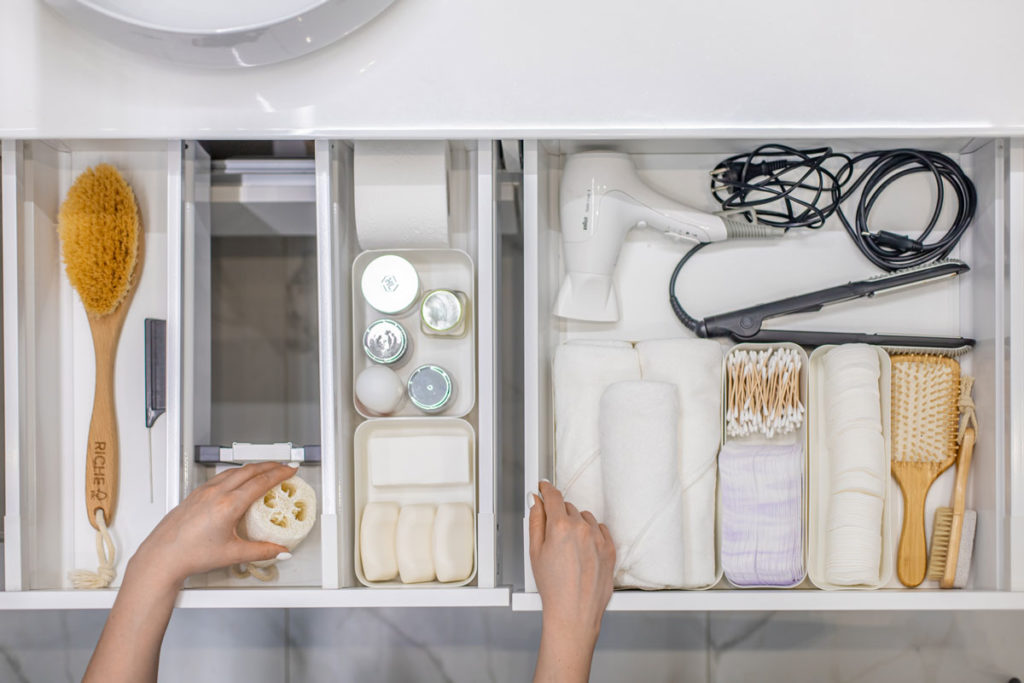7 pieces of advice on embracing Clean Beauty
Are you tempted by Clean Beauty? But how do you actually get started? In practical terms, how do you make a good choice of beauty product in the Clean Beauty family? How do you follow the right path and avoid going wrong?
Enter #CleanBeauty into Instagram… And it will bring up 3.4 million photos, to date. It just goes to show that the issue of Clean Beauty is a crowd pleaser. But how do you find own your way through? What with a concept that’s still nebulous (whereby anyone can put they want under the clean beauty umbrella) and your own good intentions? Here are 7 pieces of advice that are simple, practical and quick, to help you to embrace the Clean Beauty attitude from day to day.
Piece of advice no. 1: Settle on what kind of product you want
What are your expectations? To cut out silicon? Hunt down endocrine disruptors? Buy totally local? Favour only vegan or organic products? The easiest way to go about it is to compile your list according to your own criteria. This wish list may include ingredients to avoid, and brands, products and influencers in line with your values. You can keep your finger on the pulse by following the right Instagram accounts. At a later date, when you need a new day cream, mascara or whatever it might be… You’ll know who to turn to.
- The right habit:
Stay level-headed. Even though some ingredients, like essential oils or fragrances, are allergenic, your skin might still tolerate them well. So avoid turning into a crazed Clean Beauty extremist.
Piece of advice no. 2: Demystify the INCI ingredients list
The INCI (in full, the International Nomenclature of Cosmetic Ingredients) list is compulsory, and indicates what ingredients are in the product. Although this is a good thing in principle, it’s hard for a newbie to spot ingredients that are not clean.
- Ingredients that are not very clean
For example: paraffinum liquidum looks like a most harmless ingredient, but it’s still a mineral oil. Now on the face of it, a mineral oil is about minerals, and therefore nature. That’s as may be, but mineral oils (like petroleum, petrolatum et al.) are anything but natural. Mineral oils are made wholly from petrochemicals, and are therefore not clean at all. This petrochemical oil derivative also likes to block the pores, which blemish-prone and sensitive skin won’t like.
- The obscure words to avoid
Another piece of advice on spotting ingredients that are not clean: all the obscure words that end in “-thicone” (like dimethicone) are types of silicon which suffocate the skin. The much-vilified paraben family is easier to spot: methylparaben, ethylparaben, butylparaben, propylparaben… Read the labels carefully to identify terms like sodium lauryl sulphate (SLS) and some phthalates (DBP, DEHP, DEP, BPA…) that Clean Beauty really doesn’t like.
- The hierarchy of the INCI list
A little nuance that you should be aware of: brands are obliged to state what the ingredients are in order of proportion. Also, it’s only compulsory for them to state substances accounting for more than 1% of the formulation. The greater the proportion of a given ingredient, the higher it is on the list. So look at the first ingredients listed, and that will already give you a fair idea of the product.
- The right habit:
This INCI list appears on the packaging. So if you want to be crowned Clean Beauty Shopping Queen, get to grips with what’s really in the product before throwing away the outer packaging (which most often ends up in the sorting bin). Better still, do so before going through with your purchase. Many a time, that will save you from being disappointed.
Piece of advice no. 3: Download the right apps
To scrutinise beauty products without first getting a PhD in cosmetology, all you need to do is download specialised (free) apps. Based on a quick scan, apps like Clean Beauty, INCI Beauty and Yuka Beauty flag up controversial ingredients, endocrine disruptors and other suspect agents. It’s a quick, effective way of familiarising yourself with the INCI list.
- The right habit:
Don’t think that you can turn straight into Gwyneth Paltrow, the undisputed goddess of Clean Beauty, overnight. Give it time. Learn a little each day without spending your life decoding the INCI list.
Piece of advice no. 4: Favour natural ingredients, but not exclusively

Sure, natural ingredients are more in the spirit of Clean Beauty. But what should you make of claims such as “made from XX% natural ingredients”? Have the substances in question not undergone chemical changes before ending up in a velvety, fragranced beauty cream? And are all artificial ingredients to be shunned? Even those produced via green chemistry? This is also referred to as sustainable, eco-friendly or renewable chemistry, because it cuts down on substances that are bad for the environment. So the answer is no.
- Not everything about Clean Beauty is good
Is an organic product that’s free from preservatives but contains a large amount of alcohol (instead of preservatives) deserving of your attention? Lastly, the presumed “toxicity” of ingredients depends on each country’s regulations. In the EU, for example, 1,300 substances are banned from use in beauty product formulations. Elsewhere, regulations are far more lax.
- The right habit:
Disregard marketing spiel, and beware of brands that engage in greenwashing. Their products may look natural… But on closer inspection they are far, far, far from it.
Piece of advice no. 5: Keep packaging on your radar

Embracing clean beauty when it comes to toiletries is also about taking a “cleaning up” approach more generally. So obviously, you recycle outer packaging items made from cardboard, and plastic overwrap. You also don’t hesitate to question brands in all sectors (the beauty and food industries, etc.) on this compulsion of theirs to overpackage products all the time.
- The right habit:
Look equally carefully at the contents and the container. We are storing up a huge issue for the future with our beauty product packaging choices (our choice of materials, whether or not they are refillable, etc…)
Piece of advice no. 6: Opt for clean distribution and clean brands
Faced with the Clean Beauty wave, distributors and brands are increasingly going for transparency, and that’s a good thing. So find out about the brand environment of the brands that you like. Sort the passes from the fails, and remain vigilant (things change quickly). Also, commend the efforts of the big hitters who put forward Clean Beauty product lines, even they do so without cleaning up all their other products… It’s bound to take time. La Clean Beauty is also a baby steps policy.
- The right habit:
Be consistent with yourself. Being “clean” is about embarking on a top-to-toe responsible approach to consumer habits across all areas, not just when it comes to toiletries. We all go at our own pace, but it’s important to keep this holistic vision in mind. We all set the bar where we can. But for example, hunting down suspect ingredients in toiletries whilst buying organic vegetables that come from halfway around the world… If you think about it for a minute, it may not make much sense.
Piece of advice no. 7: Sort passes from fails among your toiletries

If you’re taking a Clean Beauty approach, you can start by sorting passes from fails on your bathroom shelves. Apply KonMarie (the method of Marie Kondo, queen of tidying up) to your lotions and potions. Be sure to pinpoint the ones that you no longer use, or have never used. There’s also no point in keeping things for the sake of it, as beauty products go stale quickly. Make a “to give away” pile and a “to throw away” pile.
- The right habit:
Sorting passes from fails… Is good, as long as you don’t fall straight back into impulse buying afterwards. Clean beauty is also about buying less, but buying better. And keep an eye on your budget, because buying “Clean Beauty” products also means spending a bit more than you would on conventional beauty products.







